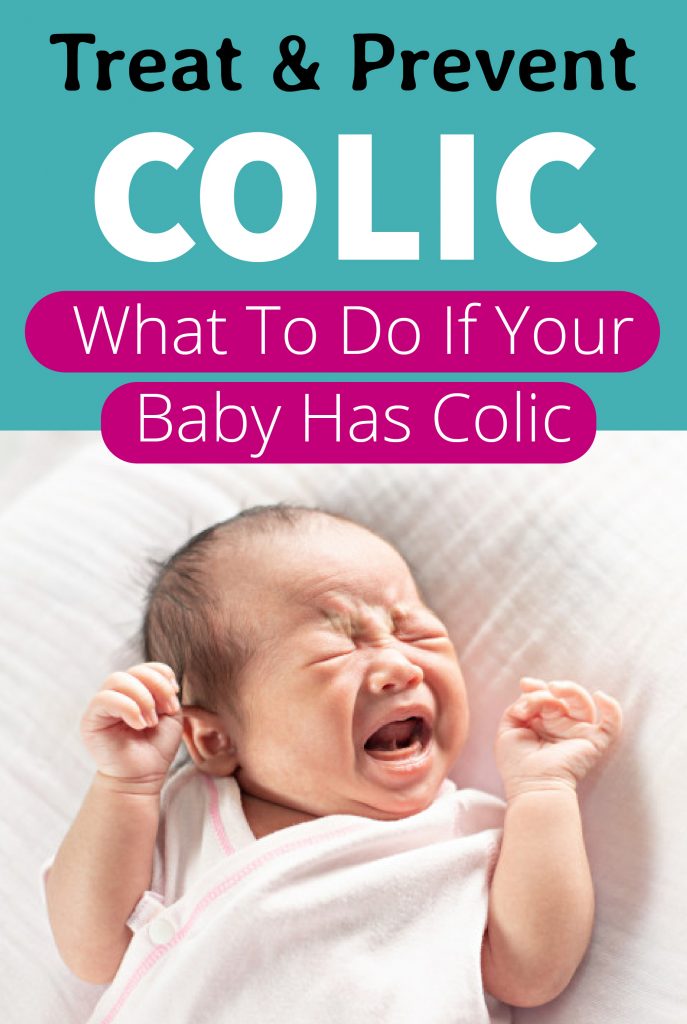
Colic is still a mystery to pediatrics, although it is extremely common in the first trimester of babies’ lives. The biggest suspicion is that colic appears due to an immaturity of the baby’s digestive system, which causes disorderly peristaltic movements, but not all children suffer from colic and some foods seem to make the situation worse.
With the discomfort of colic, the baby can cry for hours, which despairs and distresses the parents. So, although there is no sure and certain solution to the problem, there are several measures that can be taken to prevent and relieve colic in babies.
Offer exclusive breastfeeding for the first six months
If the main theory behind colic is intestinal immaturity to digest food and coordinate peristalsis, the best way to reduce this problem is to offer the baby the only food made especially for him: breast milk.
Because breast milk is more easily digested, the chance that a baby who is being breastfed will have colic is less than that of a baby who takes cow’s milk or infant formula.
Correct mistakes when picking up the baby
The way the baby positions its mouth when sucking can increase the risk of colic. If picking the baby up uncomfortably and the baby swallows a lot of air during feeding, there is a greater tendency for the bowel to become full of air and distended, causing greater discomfort.
Therefore, during the feeds, be aware of the position and correct any mistake, making sure that the baby’s belly is leaning against the mother’s belly, that the baby’s mouth covers not only the nipple but also almost the entire areola, that the lips are steady and that the baby is really sucking the breast milk and not just using it as a pacifier.
Keep an eye out
Babies who go many days without evacuation or show discomfort and effort at the time of evacuation may have more colic, as this excessive bowel movement may be a mechanism to facilitate the removal of feces.
If you notice that your baby has dry stools or effort when evacuating, talk to your pediatrician and find out what you can do to improve your child’s bowel habits.
Change your food
Science has not yet been able to prove a direct relationship between breastfeeding and the appearance of colic in babies, but many women observe this association in their daily lives.
The foods most guilty of colic are dairy products, chocolate, caffeine, citrus fruits and very spicy foods. So if the mother avoids these foods or any other food she notices that causes colic during the baby’s first trimester of life, the chance that she will develop colic is lower.
Avoid breast-feeding the baby at the time of pain
Although breastfeeding prevents the appearance of colic, it can appear and if it does, the ingestion of any food and the act of sucking can make the situation worse by further stimulating intestinal peristalsis. Therefore, it is recommended not to breastfeed the baby.
Warm compresses on the baby’s stomach
The heat helps relieve baby’s colic, which can be in the form of a freshly-washed cloth, a hot water pouch, a thermal gel pouch, or even by skin-to-skin contact with mommy or daddy’s tummy or forearm.
Attention! if the heat source is too hot, such as the water bag, it is important that it is not put in direct contact with the baby’s skin to avoid burns.
Massage your baby’s tummy
Nothing tastier for the baby than getting a belly massage at colic time to help alleviate discomfort. In addition to making circular movements with their hands on the baby’s tummy, the parents can also use oils.
To make the massage even more relaxing, try to perform it in a calm environment, a little darker and with a quiet background music.
Exercise your baby’s legs
With the baby lying on his back, bend his legs over his abdomen and move them from top to bottom for a few minutes. These exercises help the baby release gas and therefore relieve a little intestinal discomfort.

Give the drugs prescribed by the pediatrician
There are some pain and gas medications that are safe for use by babies of any age, and are often prescribed by the paediatrician even before the child leaves the maternity ward.
There is no reason to be afraid to give the medication once it has been prescribed by the doctor and the parents follow the specific guidelines regarding dosage and form of administration. But although they are an option at the time of the colic and reduce a little the discomfort of the child, the medications do not prevent the problem from arising.
Be patient
Colic is worse in the late afternoon and early evening, when parents are already more tired and stressed, which seems to be one of the triggering factors of colic. When the environment is more relaxed, the parents talk in a low voice and avoid arguments, the baby feels safer and less stressed, which would leave him less prone to the digestion problems associated with colic.
Also, as bad as colic is, it’s a temporary problem that goes away as the baby’s bowel matures. The most common is that by the second month the discomfort starts to get smaller, disappearing by the end of the first trimester, and bringing more peace of mind to the parents.
Signs that your child is gassy
We know they can’t tell us when they’re having a problem, so like many other issues involving young children, finding out what’s bothering your child is usually a process of elimination. But before you blame the gases, it’s important to pay attention to some things.
Every baby has gas. “As they eat all the time, they produce endless gases,” says Ari Brown, a pediatrician and author of “Baby 411. The frequency of the gases is not necessarily a cause for concern and a restless baby can be perfectly common.
Unlike adults, babies “view” this with far less decorum and far more enthusiasm. “They can look uncomfortable when they have gas that needs to come out,” says Dr. Brown. “But it’s rare for a baby to really feel uncomfortable due to the fumes.
But if you suspect that it’s really a problem and your child keeps squirming and pulling his legs up, he must be suffering from gas that refuses to come out. The best way to confirm your suspicion is to try some relief techniques. If your child seems to feel better, you can already confirm it.
What may be behind your baby’s crying
Dealing with the problem
There are some things you can do to help. Start by placing your child on a flat surface with his belly down. Raise him gently with your hand in the stomach area, massaging gently.
You can also put him on his stomach and move his legs as if he were riding a bicycle. “These movements usually give extra help so that the gases find their way out,” says the doctor. Also try to give him a warm bath to reduce discomfort.
If the problem does not improve, consult the paediatrician to see if it is the case of using medication in drops. Another option is to consider what may be causing the excess gas and see if you can reduce the problem from the root.
Preventive measures
Feeding time can be synonymous with your child swallowing a lot of air, which can manifest as burping or gas. While the relief of a burp may be more immediate, the gases have a long journey through the intestinal tract first.
Bottle-fed babies can ingest a large amount of blisters. To combat this, tilt the bottle at an angle that fills the entire space with milk, otherwise your baby will suck the air and have more gas potentially.
Adjust the angle. When feeding your baby, make sure the head is higher than the stomach. If the bubbles are closer to the surface, the easiest and most natural way out is the mouth.
Examine the menu. Some types of food – the most difficult to digest – cause excessive gas and the introduction of solid food can turn the game around. So if you’re dealing with a particularly agitated or constantly gassy baby, it’s worth taking a look at his diet – and yours. The food you eat that cause gas influence your breast milk, which can mean even more gas for your baby.

Disclaimer: This post may have affiliate links.


